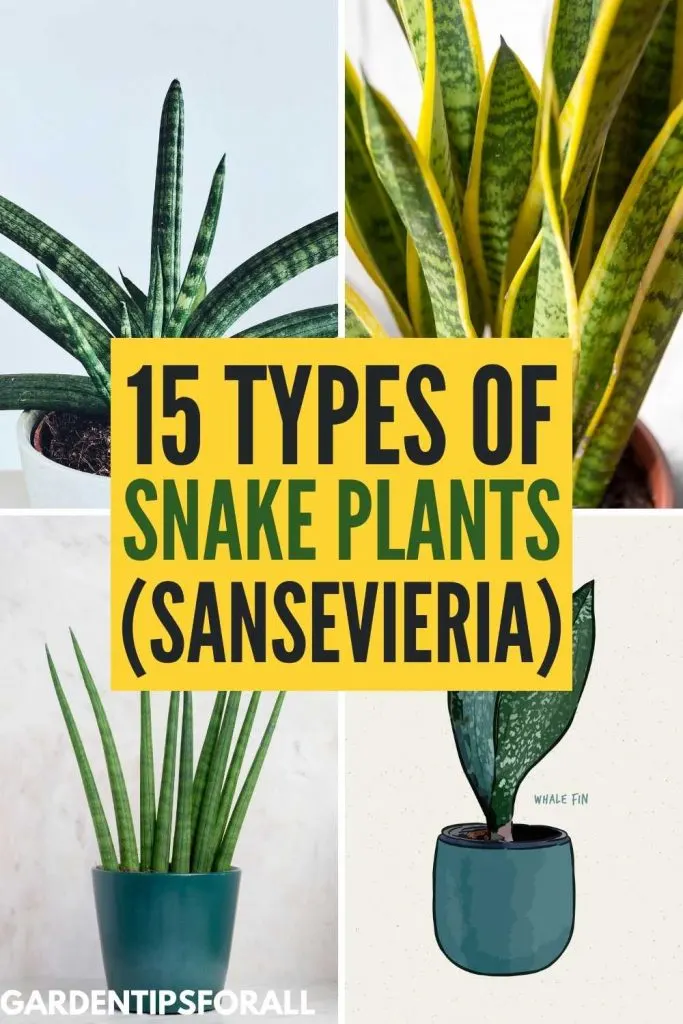15 Snake Plant Varieties – (Sansevieria Types)
Snake plants are popular houseplants, and they can grow in many different types of soil. They don’t need much water to survive, but they thrive if you give them enough light and humidity. Snake plants like bright indirect sunlight or filtered sun. They also enjoy moderate temperatures.
These plants vary in color, height, growth rate, growth direction, and more. So, when selecting among the many types of snake plants, be sure to choose one that is right for your home and lifestyle.
For example, some snake plants grow vertically while others grow horizontally. Some grow fast, while others take longer.
Snake plants are one of the ornamental plants that have spiky leaves. If you are also looking for drought resistant houseplants that are easy to care for, then you can’t go wrong with a snake plant. They are also one of the best plants for windowless bathrooms.
So, what are the various snake plant types, and which should you bring home next?
Keep reading to find out.
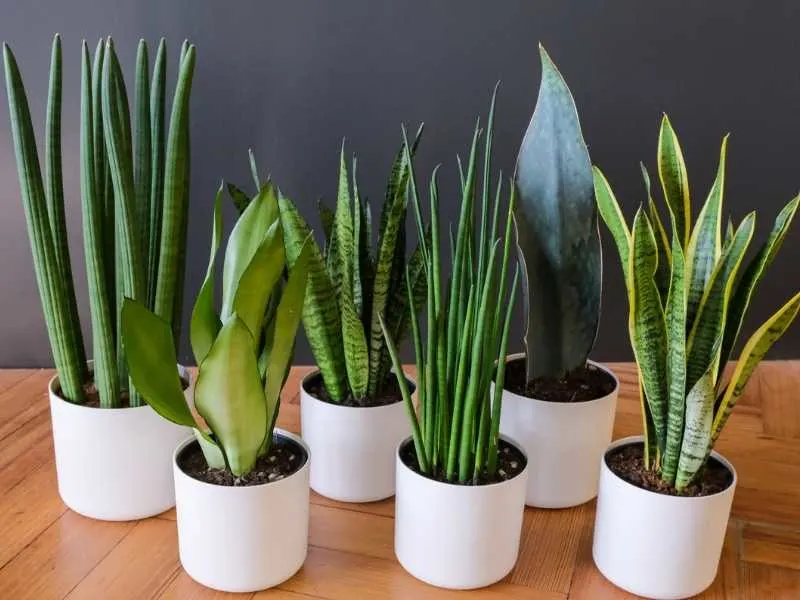
Related Articles:
- Sansevieria Leaves Splitting – Reasons Why and Solutions
- Snake Plants – How Big Do They Get?
- Why is My Snake Plant Dying?
How Many Kinds of Snake Plants Are There?
There are numerous varieties of snake plants available. In fact, around 70 varieties of Sansevieria exist. However, not all of these will work well for every household. Only a few of them are in gardens as cultivars in various breeding forms.
All of these species are Old World natives. The majority originates in Africa; others come from the Comoros Islands, Arabian Peninsula, Sri Lanka, India, and Myanmar.
They have a diverse range of habitats covering arid to wet areas, rocky places, coastal regions, and more. However, the majority is frost-sensitive and thrives indoors.
Below are some amazing snake plant types.
15 Different Types of Snake Plants (Sansevieria Species)
#1. Sansevieria Concinna
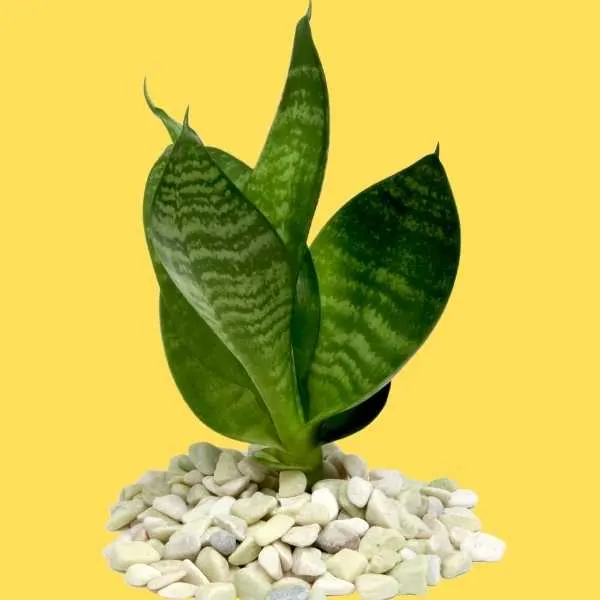
Sansevieria Concinna is unique due to the spoon-shaped leaves. This sturdy plant with erect, lanceolate foliage is a slow-growing variant that forms a rosette as it grows from a thick rhizome.
The species is green with light green stripes. The leaves are smooth on the surface and the edges soft. It produces flowers on an upright spike that grows directly from the roots. White spike-shaped inflorescences appear.
Place the plant under the shade to allow for healthy growth.
#2. Sansevieria Masoniana

Sansevieria masoniana is native to DR. Congo. It’s a snake plant known as the whale or shark fin. This luxuriant beauty isn’t always easy to get.
Its massive foliage makes it a fascinating ornament worth the effort required to care for it properly.
Potting the plant in a small container can hinder its growth, preventing it from achieving its peak potential.
While it can tolerate low and filtered light, it doesn’t do well in either. Sansevieria masoniana thrives in the right soil, with ample root space and sufficient light.
#3. Sansevieria Trifasciata
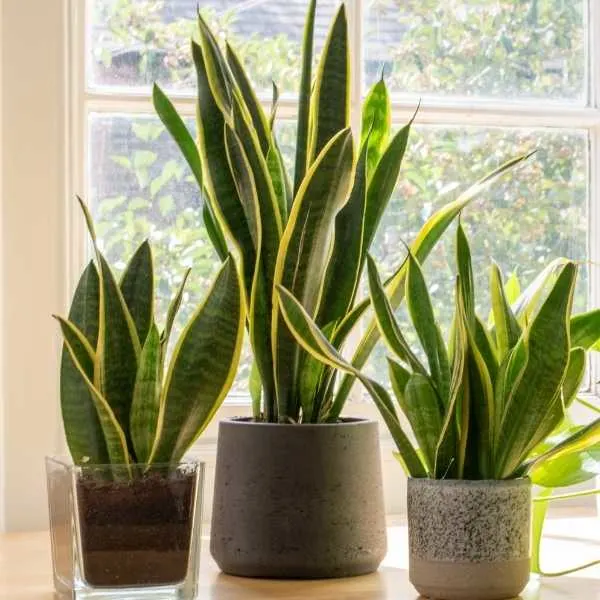
Sansevieria trifasciata is a common type of snake plant, and there are multiple cultivars available. Certain varieties have upright foliage, while others have curly or variegated leaves.
Upon maturity, the leaves are quite long and thick. This striped leaf indoor plant is indigenous to West Africa and liked for landscaping and as an accent in interior décor.
Sansevieria trifasciata is a low-maintenance plant ideal for beginners and experienced gardeners.
It prefers medium-bright light but is capable of surviving in low-light conditions.
#4. Sansevieria Laurentii
Costa Farms Snake Plant, Sansevieria laurentii
Laurentii is among the most prevalent cultivars of Sansevieria fasciata. Its golden foliar edges make it a striking addition to any house or garden.
This Sansevieria variety has foliage with golden margins. When fully grown, it can reach a height of four feet.
Like those of other Sansevieria, its sword-shaped leaves grow upright in a compact clump. When this cultivar blooms, it produces a slim inflorescence with green-white leaves at its top.
Laurentii thrives in a moderate amount of light. While brighter light results in more brightly colored leaves, direct sunlight may cause the leaves to burn.
This plant flourishes with infrequent watering, particularly in the winter. Well-draining soil is critical for root rot prevention.
#5. Sansevieria Bacularis

The color of the leaves of Sansevieria bacularis is dark green with pale transverse bands. Leaf tips are delicate. Their white flowers with a purple stripe appear in the spring.
Its slim, spear-like foliage complements contemporary decor. It’s one of those snake plants that take up little space but have a significant impact.
This species needs a location that is both warm and bright. In the summer, move outside and use water sparingly.
It tolerates brief periods of inactivity though it’s not tenacious. So, bring it indoors before the first frost.
#6. Sansevieria Gracilis
This is one of the most slender varieties of snake plants. As is the case with most Sansevieria varieties, its white and green bands are lengthy and pointed. It produces greenish-white blossoms in late fall.
Sansevieria gracilis thrives in partial sunlight or bright filtered light. This plant can grow in full shade or low light. However, the hues are less vibrant than they would be with more sunlight. #
#7. Sansevieria Cylindrica
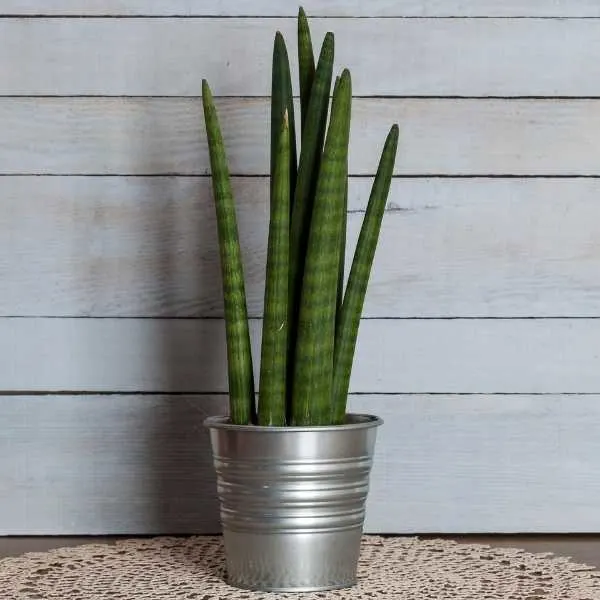
This is another South African Sansevieria species, but it’s rare. Its bright leaves can reach a length of one meter and a thickness of two to three centimeters. Their colors range from green to gray.
Dark green stripes running across are common on young plants. With age, the leaves become slightly furrowed.
It’s available in a variety of cultivars, including;
- Patula
- Spaghetti
- Skyline
#8. Sansevieria Fischeri
Sansevieria fischeri singularis rare succulent outdoor indoor collector plant
Sansevieria fischeri is distinguishable by its curved leaves and short height. Stems are dark green with a smoky gray striped pattern. At maturity, the leaves retain their cupped shape and deep coloration.
Although it thrives in containers, it also does well outdoors in the ground. It produces a cluster of tubular white flowers in the summer.
Notably, it thrives in areas with plenty of sun and sufficient drainage. Because it isn’t a frost-tolerant plant, bring it inside during winter.
#9. Sansevieria Stuckyi
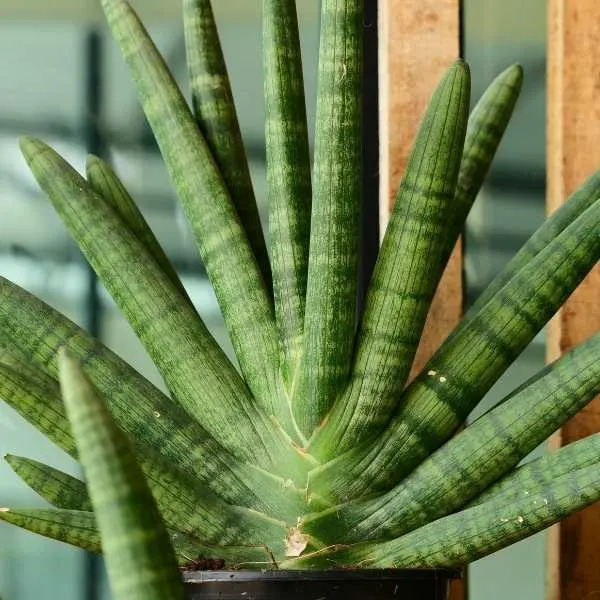
Sansevieria Stuckyi is a variety native to Southern and Equatorial Africa. It is the tallest variety of snake plants (can grow up to 10 feet) and is one of the tall growing succulents.
The Stuckyi features two looks during its existence, making for quite a unique acquisition. Sansevieria Stuckyi matures tall with cone-shaped leaves. Besides its majestic appearance, you can easily spot it with its horizontal cross stripes.
It likes loose, quick-draining soil and can survive full sun to full shade. However, keep it out of direct sunlight in the summer.
Low light provides plants with darker greens. On the other hand, your stuckyi’s leaves become more vibrant if given enough light.
#10. Sansevieria Moonshine
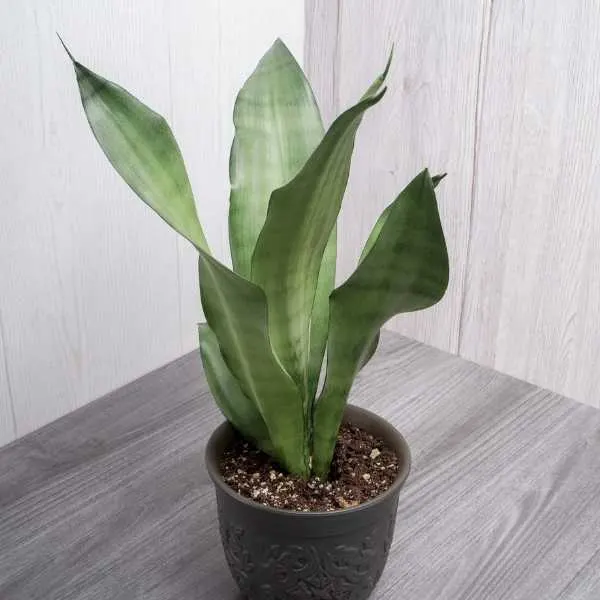
Sansevieria Moonshine has wide silver foliage and likes indirect light. In dim lighting, the leaves may darken but retain their silvery shine. Faint green stripes running down the length with dark green margins add to its beauty.
The bloom timing is unpredictable and rare, like other snake plants. But when it occurs, moonshine gives small, white, and fragrant flowers.
Sansevieria moonshine has a strong and fast-developing rhizome structure. It needs minimal care and is a cinch to propagate.
#11. Sansevieria Ehrenbergii (Samurai)
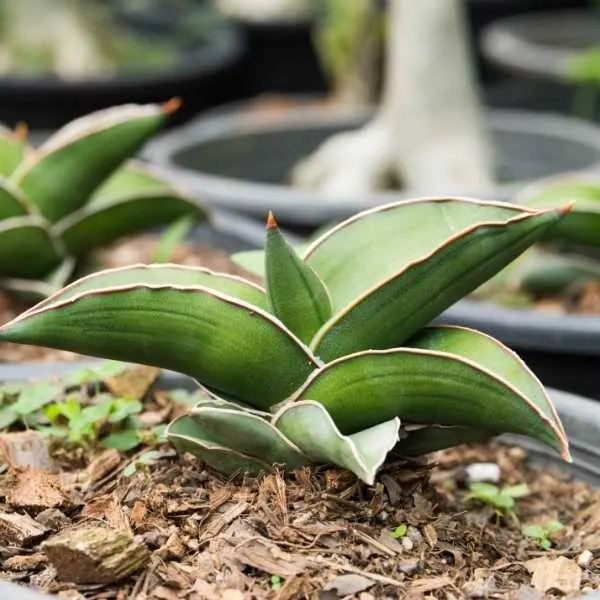
Ehrenbergii’s lengthy leaves protrude with a slight curve forming a fan shape. The inner part of the leaf develops a groove to trap rainwater and guide it toward the plant’s center.
Each leaf develops on top of the previous one but grows in a different direction. This layering pattern creates a lovely appearance to this plant that can rise to five feet.
A dwarf cultivar has smaller leaves but generates the same layers. It comes in green or multicolored leaves.
Another cultivar assumes a unique banana appearance.
#12. Sansevieria Kirkii
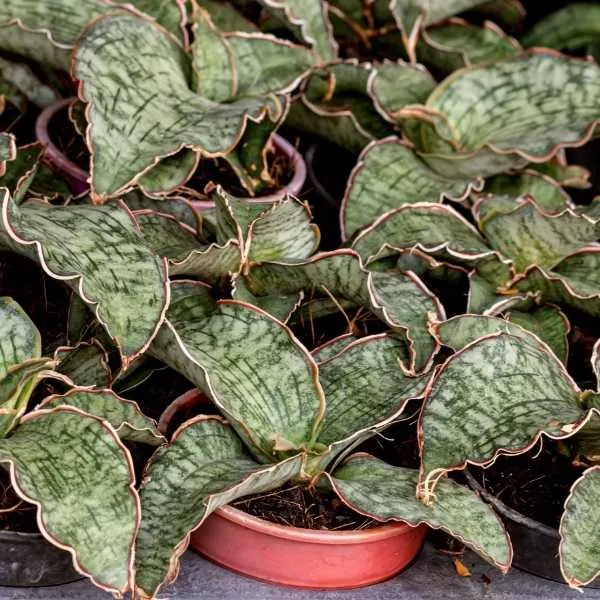
Sansevieria kirkii is among the most stylish variants with origins in East Africa, predominantly Tanzania.
It has thick silver-blue foliage with dark angular lines. The lance-shaped leaves have a wavy yellow and brown edge with a pointed tip.
This plant prefers medium or filtered sun. Brilliant, indirect light brings forth its attractive leaf color.
Ensure it isn’t in direct sunlight as this leads to yellowing. Though it may thrive in the shade, this isn’t its best environment.
#13. Sansevieria Parva
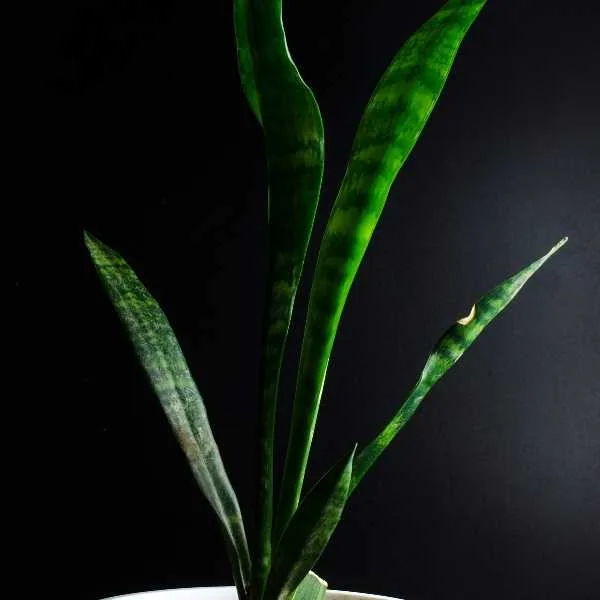
As many call it, the Kenyan Hyacinth is a prominent species in both indoor and outdoor landscaping. Despite its popularity, many confuse it with Sansevieria dooneri.
Its thick deep green striped leaves grow from small dense rosettes. The small spikes of light pink or white blossoms offer a fantastic aroma at night, making it an excellent indoor plant.
While hardy and adaptable, it prefers fairly strong indirect light. Hang a sheer curtain if you want it atop a brightly lit sunny window sill.
#14. Sansevieria Zeylanica

Zeylanica is native to Southeastern Asia. It has pointed, vibrant-green sword-shaped leaves. These leaves are upright and sturdy, with creamy wave-like bands on their surfaces.
Indoor growers need as much illumination as possible. A bright window is ideal but offers ample indirect lighting if you lack direct sunlight. In low light, it tends to take on a darker green color.
Outside, bright sun is good, though summer heat can cause leaf edges to turn yellow. It doesn’t grow well in cold temperatures, which may lead to leaf damage.
#15. Sansevieria Eilensis
This variety grows slowly with its underground rhizome producing rough, tubular, downward-curving foliage. The leaves are pale bluish-green with white bands. They also have a few green longitudinal stripes.
Sansevieria eilensis changes dramatically with age. Young plants feature a deep groove running the length of every leaf, with reddish-brown edges and a brown cuticle.
Mature foliage rolls together to create a smooth tubular leaf having a dry papery tip.
Sansevieria eilensis leaves curl up during dry spells and swells once watered. The plant thrives in medium to warm environments.
How Do I Know What Type of Snake Plant I Need?
When choosing between the different kinds of snake plants, consider factors like:
- Size: Do you want small varieties or tall ones?
- Color: Do plain or mixed colors excite you?
- Maintenance Requirements: While general snake plant care isn’t challenging, a few practices vary.
- Light Needs: Some varieties like much sunlight, others average, while others thrive in dim conditions.
- Temperature Tolerance: Snake plant varieties have diverse temperature requirements.
- Foliage Preference: Do you like single growth or clusters?
- Flower Preferences: Some variants are more readily flowering than others. Besides, inflorescence colors and sizes vary.
- Texture: Some are sleek and others hairy. A few are spiky.
- Shape: Do you love broad or slender leaves?
Once you pick the snake plant variety to grow, also look into its health using the following parameters:
Texture
The texture of a snake plant is an important determinant of its health. Snake plants ought to have firm stems and crisp, shapely leaves.
Soggy leaves or stems and a floppy appearance are all indications of poor plant health. Flimsy stalks and soggy leaves may indicate root rot, an extremely difficult condition to treat.
Color
Discoloration may highlight various underlying conditions.
Snake plants ought to be vibrant in color. The leaves should be a brilliant shade of green, and the stems should be crisp and vibrant. Watch out for yellowing, black, or brown spots, as these could imply a severe issue.
Roots
If you purchase your snake plants from garden centers rather than online retailers, remove them from the container and inspect the root system.
If the roots and soil remain compact and retain the pot’s shape even after removing the plant from the pot, the rooting system is good. If the potting mix crumbles away and you are only holding a handful of dirt, it indicates root underdevelopment.
Drainage
Because you can change the pot in which snake plants are in at any time, don’t base your final decision on pot appearance. Check that your pot has a sufficient number of drainage holes to drain excess water.
Frequently Asked Questions
Which Snake Plant is Best for Air Purification?
Sansevieria laurentii snake plant is best for air purifying not only among its like but also among other houseplants in general. The green foliage with vibrant yellow margins sets it apart from the competition.
Which Variety of Snake Plants is Best?
Each snake plant variety has excellent qualities, unique from the others. So, what suits you best might be different from somebody else’s liking. However, the Sansevieria laurentii variety is best thanks to superb aeration qualities and a lovely appearance.
What is the Most Rare Snake Plant?
Sansevieria moonshine is the most rare snake plant. It’s an excellent beginner succulent and thrives primarily on neglect. Additionally, it is an excellent choice for those with hectic schedules seeking an easy-care succulent.
What is the Tallest Snake Plant?
Sansevieria stuckyi is the tallest snake plant with cylindrical leaves rising to ten feet. It’s easy to maintain and forgiving. Hence, it’s ideal for newbies, and its breathtaking look cements its adoration among gurus.
Snake Plant Types (Sansevieria Varieties) – Conclusion
Snake plants adapt to various conditions, making them perfect for indoor use and outdoor gardens.
They do best when kept under some sun, although several snake plant types thrive in partial shade. In general, they prefer moist soil that drains well.
Once established, they don’t need much water, so you should only water your snake plant if necessary. Water once every few weeks.
So, irrespective of which varieties you love the most, they are all relatively effortless to nurture.
